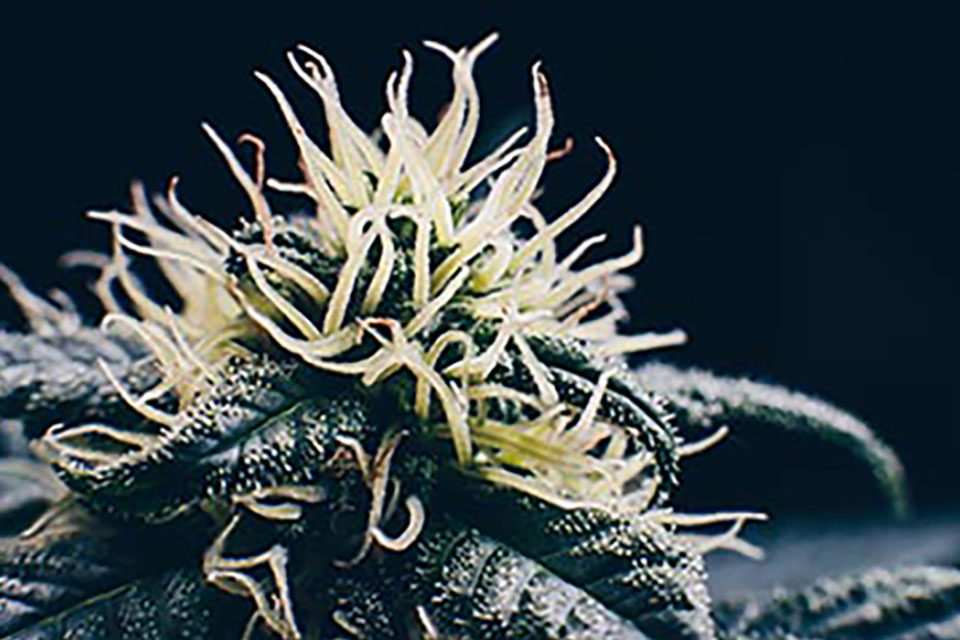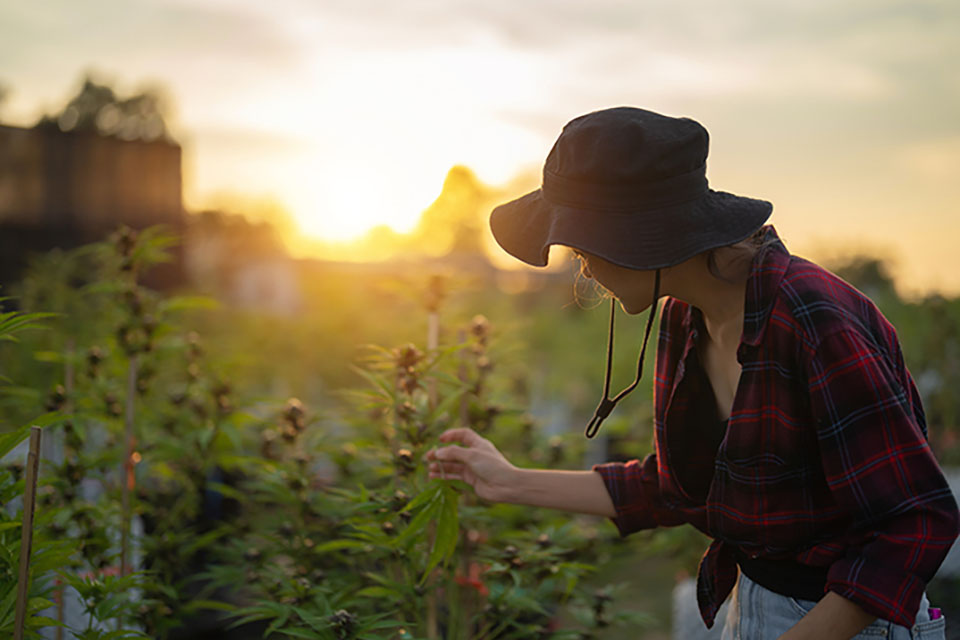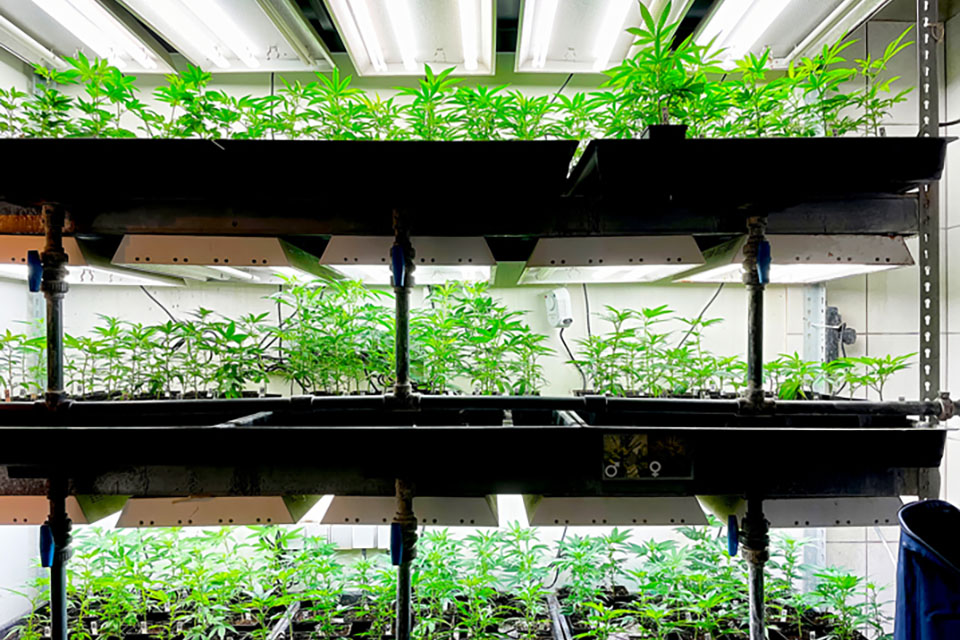
How to Increase Your Marijuana Yield
As a cannabis seed grower, you always want to obtain the highest yield possible. Higher yields mean more buds to enjoy, and potentially more money in your pocket. If your returns have been less than satisfying, this guide will help. Thankfully, there are some steps you can take to increase your marijuana yield dramatically and finally enjoy a bountiful harvest whether you grow your cannabis in Maine, Florida, or South Dakota.
What Factors Affect a High Yield?
Multiple factors can affect the final yield of your cannabis crop. Being aware of these factors can help you to avoid problems.
- Temperature plays a factor in the yield of your 420 or 710 If the grow room temperature rises above 85 or below 65, the cannabis plants will go into survival mode and will conserve their energy as much as possible, which can diminish growth.
- Water also plays a vital role in the final yield of your crops. Too much moisture or too little can cause problems with growth. Generally, cannabis plants do not like too much water because it bogs down the root system and leads to possible root rot.
- Humidity can lead to problems. During the vegetative and flower stages, too much moisture in the grow room can cause mold development, which will eventually destroy your plants. It is best to keep your grow room between 45% and 50% relative humidity.
- Nutrients can lead to large yields, but plant development can also be impeded if you give too many nutrients. The most critical macronutrients for cannabis are nitrogen, phosphorus, and potassium. During the vegetative stage, feed with a higher ratio of nitrogen. Once your plants begin flowering, switch to a nutrient solution that is higher in phosphorous.
- Light should also be considered if your yield is lacking. A perfect balance of light is critical. It is essential to follow a tight light schedule, giving more light in the vegetative stages and equal darkness and light in later stages. If you have autoflower seeds, this is not so much of a concern so you can give them as much light as you like all the way through flowering (although 4-6 hours of darkness is still helpful for cellular repair and bud growth.
- Genetics plays a more important role than most people realize. Some strains of cannabis simply offer higher yields than others. Carefully researching the options and purchasing the right seeds and clones is vital.
How to Improve Your Marijuana Yield
So, you planted some marijuana plants, put in all the hard work, and ended up with a much smaller yield than expected. This can be heart-breaking, especially for new cannabis farmers. Now that you know what can go wrong with growing marijuana, it is essential to discover how to avoid lower yield issues.
Lighting
When you are growing cannabis, the goal is to have bigger and bushier plants that produce a higher yield. When the light is not intense enough, you will see changes in your cannabis plants.
Cannabis plants, like all plants, need light to grow. Light is responsible for providing the plants with the energy they need for creating food. When the light is not intense enough, the cannabis plants will begin to grow much taller and “leggy.” You will see longer stems with a lot more space between nodes.
Fewer nodes are going to mean a less bushy plant. When it comes to growing cannabis, you want bushiness over height. Bushier plants equate to much more bud.
Out of all the factors that influence yield, light is undoubtedly near the top of the list. If your light is not intense enough, and the plants are not receiving the required number of hours of light, they will begin to suffer. After spending so much money on seeds or clones, this is not something anyone wants to happen.
How to Combat Light Problems
If you have noticed your plants are becoming leggy because of a lack of light, there are a couple of things to do to correct the problem. Consider the following for ensuring your cannabis plants receive the highest intensity of light during the flowering stage.
One straightforward method is to move the lights closer to the plants. If your plants have already experienced uneven growth, this method is going to be a little more complicated.
CO2 can also help with light issues. If your plants are not taking in enough light, the grow room may be lacking in CO2. Pumping CO2 into the room can be beneficial.
Pruning
Pruning is another method of helping to increase the final yield. If the tops of your plants are receiving a lot of light, but the bottoms are not, pruning can be beneficial.
Training and pruning cannabis plants help to control their growth. It can prevent them from growing too leggy and encourages them to grow bushier. There are a couple of ways to prune and train cannabis, so it grows out wider rather than taller.
- Topping involves removing the very top leaves from the plant. You should use pruning shears to remove the leaves. Never pull on the leaves to remove them, or you could end up causing significant damage to the plant.
Low-stress training is also an option for controlling the growth of your cannabis plants and ensuring their yield will be increased. This process involves the use of a wire screen or flat trellis. As the plants grow, you will gently bend the stems and coax them through the openings of the lattice. Placing a wire screen (Screen of Green) over the plants will naturally make them grow flatter and bushier. If you would like to use low-stress training, it is wise to start when the plants are very young.
Nutrients
The right nutrients are essential for healthy cannabis growth. If your plants are lacking vital nutrients, the yield is going to be much smaller. Multiple signs can alert you of nutrient deficiencies.
- The leaves suddenly develop brown edges that appear scorched
- The leaves begin to yellow
- The leaves start to die
- The leaves begin to droop
If you notice any of the above, immediate action must be taken. The leaves of a cannabis plant are always the first part to start showing signs of nutrient deficiencies. Make sure to check your plants daily for any signs of problems with leaf growth.
Three macronutrients are vital for healthy plant growth and high yield. Nitrogen, phosphorous, and potassium are all essential. Nitrogen is especially important during the vegetative stage, while phosphorous and potassium are crucial during the flowering stages.
One of the biggest mistakes you can make as a new marijuana farmer is adding too many nutrients too quickly. Dumping a lot of nutrients in the soil or water can cause some of the same issues above.
It can be difficult achieving the ideal balance between the right level of nutrients and using too much. As you continue growing, gaining experience will help you to avoid giving too many nutrients or too little.
To be safe, it is typically better to use less nutrient solution than more. If you are using a commercial solution, make sure to use only half of the recommended amount, so you do not overfeed. Once your plants have reached the point where harvest time is coming, it is essential to stop feeding nutrient solutions.
Some growers begin to see their plants drooping towards time for harvest, and they panic and start feeding more nutrients, mistakenly believing their plants are about to die. Feeding at this stage is one of the worst things you can do to your cannabis plants because it will slow down the production of buds. Too many nutrients in the last couple of weeks can result in a lower yield and an “off” taste in marijuana.
It is entirely normal for the leaves of a marijuana plant to yellow and even fall off right before harvest. Do not let this concern you. If some of the leaves fall off, this allows the plant to put its full focus on developing big, delicious buds, which is what growers are after.
If you want to avoid having to worry about the nutrients the plants are receiving, it is easy to make compost. Adding rich compost to the soil will give your cannabis plants all the nutrients they need throughout their lifespan.
Climate
The climate of your grow room is crucial for the health of the plants and the final yield. Your grow room must have the right temperature and humidity level, or the cannabis plants will not thrive.
Temperature
Have you ever noticed one spot on a plant turning brown? When this happens, the problem is most likely caused by the marijuana plant being near too much heat. The lights you use can create a lot of heat in a grow room. When temperatures rise above 85, plants will die. Even if the temperature of the room is within normal ranges, yield can be affected, the higher the temperature grows.
A healthy climate is vital for healthy plant growth. The temperature needs change with each stage of growth. Allow the following to help you understand how to keep your plants happy at each stage of development.
- Seeding 68-77 degrees
- Vegetative 70-85 degrees
- Flowering 65-80 degrees
You can quickly increase the temperature by adding heaters or higher intensity lights. If the temperatures in the grow room are rising too high, take the following steps.
- Increase the airflow in the room so the hotter air will rise to the top and be removed.
- Make sure you cut off the lights during the day and turn them on at night.
- Install an air conditioner to help control the temperature and humidity levels.
Humidity
Cannabis plants also require the right level of moisture to ensure they can produce a high yield. Too much humidity in the air can lead to mold and mildew growth, while too little can prevent your plants from carrying out the process of respiration.
Just as with temperature, your cannabis plants are going to need different relative humidity levels in their varying stages of growth. Consider the following for providing your plants with the ideal level of humidity during each stage of development.
- Seedling 65-70%
- Vegetative 40-70% (lowered at intervals of 5% every week)
- Flowering 40-50%
- Late flowering 30-40%
The humidity level will need to be dropped much lower during the flowering stage because your plants are going to be much more vulnerable due to bud development. Colas are vulnerable to becoming moldy if too much moisture is in the air.
While it is relatively easy to increase humidity, it is a little more challenging to reduce. There are a few steps that can be taken to lower the humidity levels in a grow room.
- Turn up the velocity on the tube vent to suck excess moisture out of the room.
- Use an air conditioner to provide an increase of fresh, cool air to the grow room.
- Make sure to only water the plants when the lights are on.
- Use a dehumidifier that is mid-sized or larger, depending on the size of the grow room.
Keeping a proper climate in the grow room is easier when you upgrade to an automated system. These are not recommended for new growers or those with small setups, but they can prove invaluable if you plan on consistently growing marijuana throughout the year. An automated setup can save you a lot of hassles and ensure the room climate remains at a safe, healthy, and consistent level throughout each growth stage.
Conclusion
If your marijuana yield has been lacking, there could be multiple reasons to blame. This guide is meant to help you determine the problems and find the solution, whether you grow in Arizona or Nebraska.
It takes a concerted effort to keep cannabis healthy and growing strong. The healthier your plants, the bigger the yield you will receive. This in turn means more THC or CBD that can be used to ingest or create other downstream products like oil, shatter, and even topical creams.
Increasing your yield takes time, but it is possible with the right steps. Focusing on light, nutrients, and climate will give your cannabis plants what they need for healthy growth and the highest yield possible.
Taking the steps mentioned will help to ensure your plants grow large buds that are packed with resin. Keeping a constant check on your marijuana plants will alert you if any issues arise so quick action can be taken.



